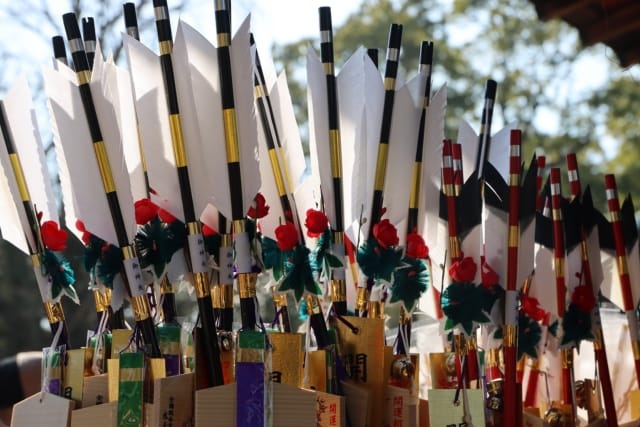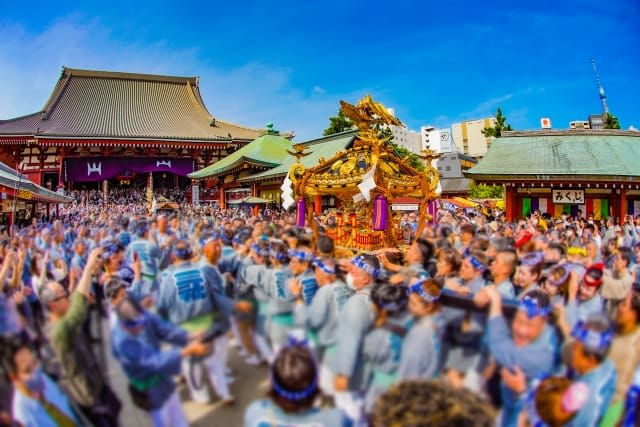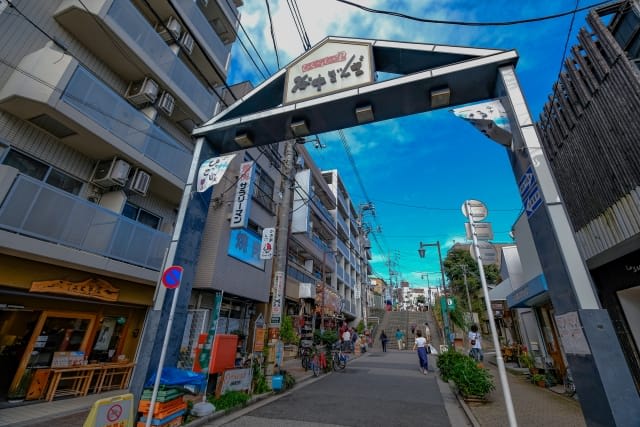Ueno Kanei-ji in Ueno Park Guide 2026: History, Must-see Spots, and Access
Since moving to a neighborhood adjacent to Shinjuku in 2024, I've been visiting many cities in Tokyo including Ueno almost daily to explore its appeal and discover spots I can recommend to tourists. I updated this article in January 2026 to incorporate my findings from this research, along with the latest information for 2026.
Another reason for updating the article is the growing interest in tours that allow visitors to safely and deeply experience Ueno's nightlife. With countless izakaya (Japanese pubs) packed into Ueno, tourists visiting for the first time find it extremely difficult to discover the truly excellent spots beloved by locals.
This is why food tours led by knowledgeable local guides who know Ueno inside and out have been gaining popularity, as they take visitors through Ueno's maze of izakaya establishments.
In fact, Magical Trip's tour, which ranked #1 among all tours on Tripadvisor, has been receiving numerous applications.

If you want to experience truly local-favorite izakayas in Ueno, one of Tokyo's premier drinking districts, join the "All-You-Can-Drink Bar Hopping Tour in Ueno." Not only will you discover hidden gems that tourists rarely find, but you'll also experience the Japanese culture of "shime" (end-of-night ritual).
For those who love retro neighborhoods, we also recommend the "Yanaka Historical Walking Tour in Tokyo's Old Town," which takes you through Yanaka, Ueno's neighboring district, with a local guide. It's an efficient and immersive way to enjoy this deeply traditional and historic area of Yanaka.
We hope you'll have a wonderful time experiencing everything Ueno has to offer by joining a Magical Trip tour!
Introduction
Ueno is a district in Taito Ward known for its zoo, art museums, lush parks, and the vibrant drinking district under the elevated train tracks. With its Shinkansen station and easy access from central Tokyo, it's also a popular base for tourists.
The Ueno area is home to numerous historical shrines and nature-surrounded spots, making it a frequent destination for tourists who often combine their visit with the equally popular Asakusa.
Within and around Tokyo's premier natural park, "Ueno Park," there are many temples and shrines. Among these, Ueno Kanei-ji Temple, located next to Shinobazu Pond, exudes a particularly solemn atmosphere, its grandeur overwhelming visitors.
In this article, we'll introduce the charm and highlights of "Ueno Kanei-ji," a top tourist spot in Ueno with about 400 years of history.
Ueno Kanei-ji: A Tendai Buddhist Temple Built in 1625, Modeled After Hieizan Enryakuji Temple
Ueno Kanei-ji was established in 1625 as a Tendai Buddhist temple, modeled after Hieizan Enryakuji Temple (mentioned later). It's the temple that enshrines Tokugawa Ieyasu, a crucial figure in Japanese history who unified Japan in 1603 and established the Edo Shogunate.
In traditional Japanese customs and thought, there's a direction called "Kimon" through which inauspicious energy is believed to enter easily. Ueno Kanei-ji was built to seal off the Kimon to the northeast of Edo Castle and protect the Tokugawa family.
What is Tendai Buddhism?
Source: Official website
Tendai Buddhism is a branch of Buddhism that originated in China in the 6th century. It's named "Tendai" after Mount Tendai in China, where its teachings were established.
In the 9th century, the monk Saicho brought these teachings back to Japan and spread them. Tendai Buddhism teaches that "all people can become Buddha" and values acting with respect for oneself and others.
The most important temple for conveying Tendai teachings is Hieizan Enryakuji Temple. Many monks trained here, greatly influencing later Japanese Buddhism.
Ueno Kanei-ji, modeled after Hieizan Enryakuji Temple, is also called "Toeizan."
Ueno Kanei-ji Celebrated Its 400th Anniversary in 2025
Ueno Kanei-ji celebrated its 400th anniversary in 2025. Built in 1625 to enshrine Tokugawa Ieyasu, this temple has been deeply involved in Japanese history and culture from the Edo period to the present day.
To commemorate this milestone, a ceremony celebrating the 400th anniversary of Ueno Kanei-ji's founding was held on October 10, 2025. Before and after the ceremony, a special exhibition commemorating the 400th anniversary of the founding of Ueno Kan'ei-ji Temple was held at the Tokyo National Museum.
Three Must-See Highlights at Ueno Kanei-ji
The Konpon Chudo: Designated as a Registered Tangible Cultural Property of Japan
Source: Official website
The Konpon Chudo of Ueno Kanei-ji is a historical building protected by the Japanese government as a culturally important structure.
Enshrined in the center of the temple is the "Yakushi Ruriko Nyorai," the most important Buddha statue for this temple. Unfortunately, as it's a hidden Buddha, you can't see it directly. However, there are several other impressive Buddha statues enshrined here that will overwhelm you with their presence.
A large dragon painting was dedicated to the ceiling in 2025. Its magnificent scale is a must-see. This is a special spot where you can experience the power of traditional Japanese architecture and Buddha statues while calming your mind.
The Shinobazu Pond Bentendo: A Part of Ueno Kanei-ji
Source: Official website
The Shinobazu Pond Bentendo is a temple floating on the beautiful "Shinobazu Pond" in Ueno Park and is part of Ueno Kanei-ji. It was created to resemble Mount Hiei and Lake Biwa. The Bentendo enshrines "Benzaiten," the goddess of arts and fortune.
The unique scenery of the building floating on the pond is perfect for photography. Especially from July to August, you can enjoy beautiful lotus flowers blooming in the pond. At night, it's illuminated, creating a fantastical atmosphere.
Historical Monuments Found Throughout Ueno Kanei-ji
Many monuments recording history are scattered throughout Ueno Kanei-ji.
These monuments are inscribed with events related to the founding of Ueno Kanei-ji, its connections with the Tokugawa Shogunate family, important ceremonies of the temple, and historical events.
Through these monuments, you can touch upon the deep history and cultural significance of Ueno Kanei-ji. While it might be a bit challenging, learning about what happened here in the past is key to understanding Japanese history more deeply.
The "Mushizuka Monument": Registered as a Designated Tangible Cultural Property
Source: Tripadvisor
The "Mushizuka Monument" in Ueno Kanei-ji was erected in 1821 by a person named Sessai to commemorate the insects he used for his sketches.
Sessai painted many flowers and birds in a very realistic style. Particularly famous is his "Chuchijo" album, which depicts insects in detail. This album is highly regarded for its accurate depiction of insect shapes and characteristics.
Please feel the Japanese respect for nature, which values even the lives of small insects, from this stone monument.
Monument Recording the Course of the "Ueno War" That Led to the Creation of Ueno Park
Source: 4 Travel
Within Ueno Kanei-ji, there's a monument recording the course of the "Ueno War," which led to the creation of Ueno Park.
With the major political and social revolution that began in 1868, the Tokugawa Shogunate, which had lasted for about 260 years, ended, and Japan transitioned to a new government centered on the Emperor. The Ueno War was a battle between the "Shogitai," who supported the Tokugawa Shogunate, and the new government army. The Shogitai holed up in Ueno Kanei-ji and resisted the end of the Edo Shogunate but were defeated by the new government army.
This monument was erected in 1912 and is a valuable record of the battle at that time. It conveys to the present day that Ueno Park was once a battlefield.
The Bell Tower: A Tangible Cultural Property of Taito Ward That Produces a Solemn Sound
Source: Rurubu
The "Bell Tower" of Ueno Kanei-ji is a historical building protected by Taito Ward, with a large bell hanging inside. The sound of this bell tower can now only be heard during important Buddhist events and year-end events.
The bell hanging inside was cast in 1787 and is about 1.7m high and 1.1m in diameter. Its solemn and heart-touching tone fascinates visitors and creates a dignified atmosphere.
When visiting Ueno Kanei-ji, please pay attention to this bell tower and feel the depth of Japanese history and culture.
On New Year's Eve (December 31), the Sound of the New Year's Bell Echoes Throughout Ueno Park
In Japan, many temples perform the "Joya no Kane" ceremony on the night of December 31. At Ueno Kanei-ji, the bell is rung 108 times on the night of December 31, and its sound echoes throughout Ueno Park.
This number 108 is said to represent the number of human desires and worries, and ringing the bell is meant to purify the heart and welcome the new year.
The sound of the bell ringing in the quiet night is a special and mystical experience. The sound, unchanged for over 300 years, will deeply resonate in people's hearts.
Access and Basic Information for Ueno Kanei-ji
Address: 1-14-11 Ueno Sakuragi, Taito-ku, Tokyo
Access: 10-minute walk from JR "Uguisudani Station"
Opening Hours: 9:00 - 17:00
Phone: 03-3821-4440
Official Website: https://kaneiji.jp/#gsc.tab=0
Historical Shrines and Temples Around Ueno to Visit Along with Ueno Toshogu
Within Ueno Onshi Park
Ueno Toshogu
Source: Official website
Ueno Toshogu was built in 1627 to enshrine Tokugawa Ieyasu and still retains its appearance from that time.
The main shrine decorated with dazzling gold leaf, the Karamon gate with intricate carvings, and the stone and copper lanterns lining the approach are must-sees. Especially the golden main shrine fascinates visitors with its luxury and solemnity.
You can enjoy a different atmosphere from Ueno Kanei-ji and experience the unique luxury and historical atmosphere of Ueno Toshogu.
Address: 9-88 Ueno Park, Taito-ku, Tokyo
Opening Hours: Winter (October - February) 9:00 - 16:30
Summer (March - September) 9:00 - 17:30
Closed: None
Phone: 03-3822-3455
Official Website: https://www.uenotoshogu.com/
Gojotenjinsha
Source: TAITO Official website
Gojotenjinsha is a historical shrine within Ueno Park that enshrines the gods of medicine and pharmacy. Surrounded by lush greenery, it offers a quiet atmosphere that soothes the heart.
Every 10th of the month, the "Iyakusai" festival is held to pray for recovery from illness. Worshippers offer dolls to the shrine, praying to stay healthy and free from illness and injury.
In June and December, the traditional Japanese health prayer ceremony "Chinowa kuguri" is held. By passing through a large ring made of grass, people purify their bodies and pray for health and to stay free from illness.
If you want to experience praying for health and recovery from illness, be sure to visit Gojotenjinsha.
Address: 4-17 Ueno Park, Taito-ku, Tokyo
Opening Hours: 6:00 - 17:00
Closed: None
Phone: 03-3821-4306
Official Website: https://www.gojoutenjinsha.com/
Around Ueno Onshi Park
Shitaya Shrine
Source: Official website
Shitaya Shrine, founded in 730, is the oldest shrine in Tokyo. It's believed to bring good fortune in business and family safety, and is still deeply loved by local people.
The ceiling of the worship hall features a dragon ceiling painting by Yokoyama Taikan, a master of modern Japanese painting. This magnificent work has been designated as a historical asset of Taito Ward.
Visiting Shitaya Shrine along with Ueno Kanei-ji will make your journey through the historical shrines and temples around Ueno even more fulfilling.
Address: 3-29-8 Higashi-Ueno, Taito-ku, Tokyo
Opening Hours: 24 hours
Closed: None
Phone: 03-3831-1488
Official Website: https://shitayajinja.or.jp/
Marishiten Tokudaiji
Source: Official website
Marishiten Tokudaiji is a temple with nearly 400 years of history. Despite being located in the bustling Ameyoko shopping district, it maintains a quiet and sacred atmosphere.
This temple has long been worshipped as a guardian deity bringing good fortune and victory. The statue of the boar called "Chikara no I" is popular among visitors, believed to bestow benefits of energy, physical strength, and financial power when stroked. Also, the Buddha statue called "Jogyo Bosatsu," which wards off disasters and misfortunes, is believed to remove physical illnesses and mental troubles when scrubbed with a brush and sprinkled with water.
When you visit Ueno Kanei-ji, consider extending your trip to Marishiten Tokudaiji, known as a power spot.
Address: 4-6-2 Ueno, Taito-ku, Tokyo
Opening Hours: 6:30 - 18:30
Closed: None
Phone: 03-3831-7926
Official Website: https://marishiten-tokudaiji.com/
Yushima Tenmangu
Source: Official website
Yushima Tenmangu is a shrine that enshrines Sugawara no Michizane, famous as the god of learning, and is particularly popular among students. Every year, many students visit to pray for success in their exams when the new year begins.
A highlight of Yushima Tenmangu is the "Plum Festival" held from early February to early March. Yushima Tenmangu is also famous for its plum blossoms. In season, about 200 white plum trees bloom, and you can enjoy the scent of plums and beautiful flowers spread out before you.
Plum blossoms are loved by Japanese people as much as cherry blossoms. At Yushima Tenmangu, you can experience a taste of Japanese nature.
Address: 3-30-1 Yushima, Bunkyo-ku, Tokyo
Opening Hours: 6:00 - 20:00
Closed: None
Phone: 03-3836-0753
Official Website: https://www.yushimatenjin.or.jp/pc/index.htm
Akiba Shrine
Source: Wikipedia
Akiba Shrine was built in Akihabara to prevent fires and is the origin of the Akihabara station name. It was moved to its current location due to the establishment of the railway station.
A highlight of this shrine is the fire-walking ritual held every year on November 6. After a fire is built up, people walk barefoot over the cooled embers. This ritual embodies gratitude and reverence for fire.
General worshippers can also participate in this sacred ritual and experience fire-walking. The opportunity to actually experience fire-walking is a valuable chance to learn about traditional Japanese beliefs and culture.
Address: 3-10-7 Matsugaya, Taito-ku, Tokyo
Opening Hours: 24 hours
Closed: None
Phone: 03-3844-5748















